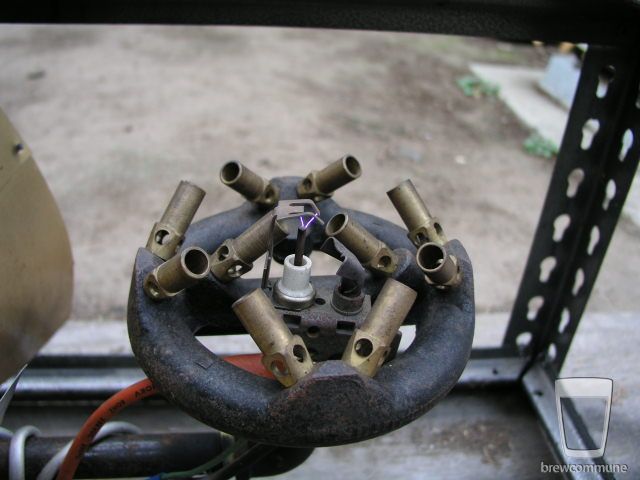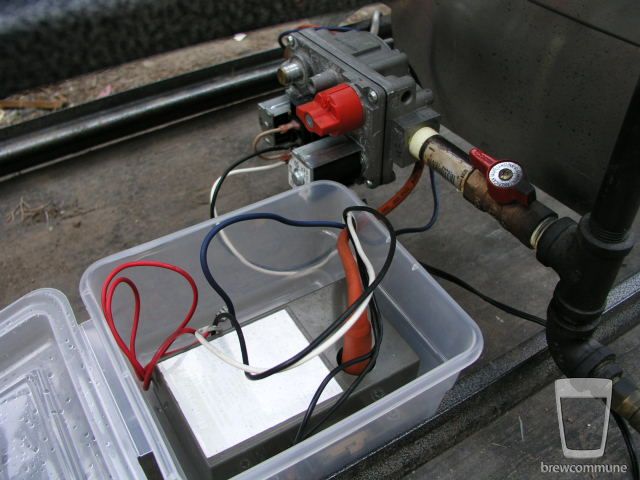Here are some photos of the latest generation of my iBrew. I hope to have it operational (meaning actually attached )by the Jan 3rd brew day. I made some changes to the circuit board. I added an inverter to the board to power the EL back light on the LCD and I moved the temp sensor jacks onto the board instead of connecting via headers; there were just too many wires going from the board to elsewhere in the enclosure. That allowed me to move the RC signal cleaning circuits to the board too. This enclosure is temporary, I don't like it and the switches are just too big. I wanted a heavy duty looking switch but I've since changed my mind and will go with something that A) doesn't require a square f-ing hole and B) Doesn't take up so much room.
The controller is a 6-channel digital thermometer with 4 solenoids. It's basically the equivelent of 4 Ranco controllers and 2 additional digital thermometers. It's all based on an Arduino, which is under the circuit board in these photos, attached via headers like a Shield. It's been a very fun project. The burner control circuits also have a 30 second lock out to prevent the burners from firing on and off if the temp is hovering.
iBrew inside shot:
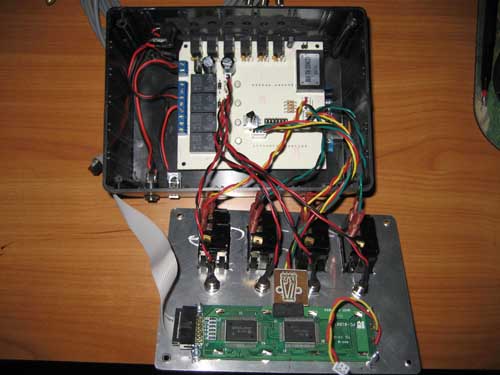
This is the new Splash Screen:
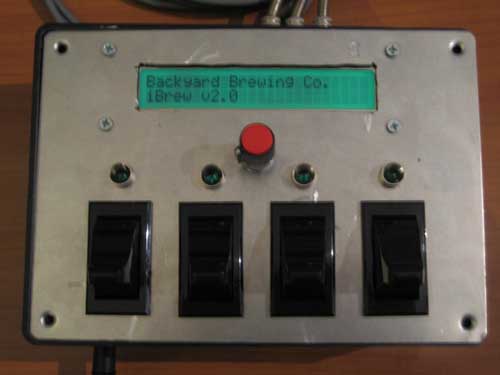
Here's the HLT screen. The setpoint has been set to 80* and the screen and LED are indicating the burner would be ON:
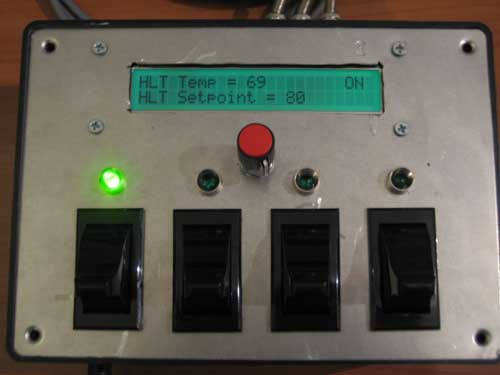
And the MLT screen, also indicating the MLT burner and pump are both on. If the iBrew turns on the MLT burner is turns on the pump at the same time to prevent scorching.
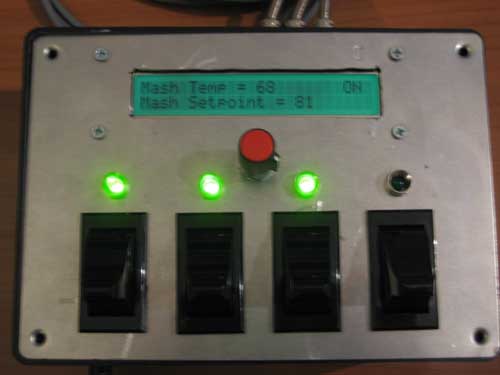
The controller is a 6-channel digital thermometer with 4 solenoids. It's basically the equivelent of 4 Ranco controllers and 2 additional digital thermometers. It's all based on an Arduino, which is under the circuit board in these photos, attached via headers like a Shield. It's been a very fun project. The burner control circuits also have a 30 second lock out to prevent the burners from firing on and off if the temp is hovering.
iBrew inside shot:

This is the new Splash Screen:

Here's the HLT screen. The setpoint has been set to 80* and the screen and LED are indicating the burner would be ON:

And the MLT screen, also indicating the MLT burner and pump are both on. If the iBrew turns on the MLT burner is turns on the pump at the same time to prevent scorching.




